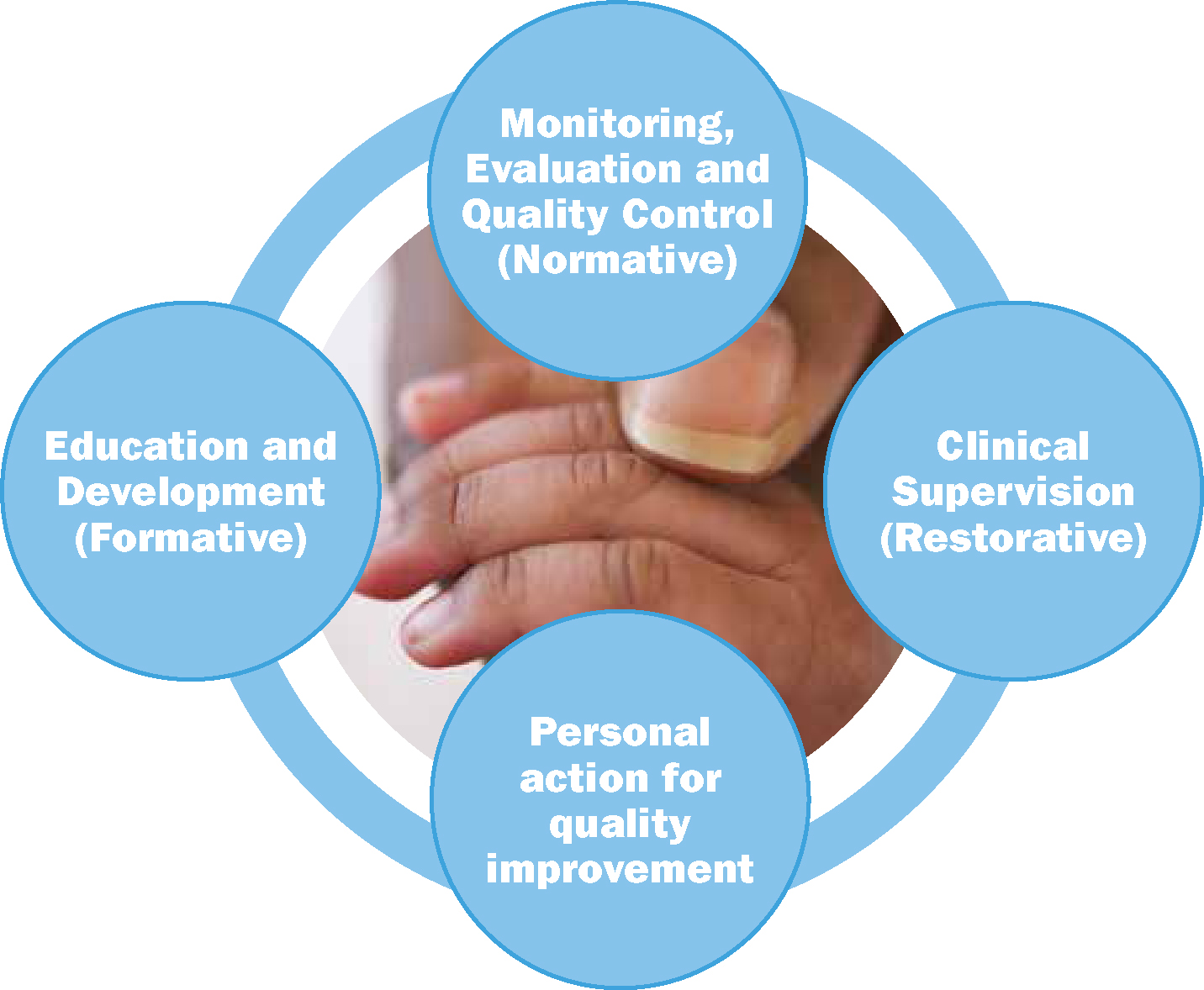Reflecting on my personal experience of statutory supervision of midwifery and considering the reflections of others, I am more convinced than ever that the new A-EQUIP (an acronym that means Advocating for Education and Quality Improvement) model of midwifery supervision will be beneficial for midwives, students, women, and babies.
The A-EQUIP model (Figure 1) was launched on 28 April and the associated operational guidance (NHS England, 2017) was published on 7 April 2017. This model replaces statutory supervision of midwifery, which ceased on 31 March 2017. The removal of statutory supervision was prompted by the Parliamentary and Health Service Ombudsman report (Parliamentary and Health Service Ombudsman [PHSO], 2013) and subsequent reports (Kings Fund, 2015; Department of Health, 2016), that culminated in legislative change.

The Professional Midwifery Advocate (PMA) is a new leadership and advocacy role that has been developed to deploy the A-EQUIP model. A role descriptor and job profile is outlined in the A-EQUIP operational guidance (NHS England, 2017). The PMA bridging module/shortened programme and long PMA programme are being developed by Higher Education Institutions (HEIs). These programmes will prepare the midwives who intend to seek appointment as a PMA. Midwives who have completed the preparation of supervisors of midwives course (PoSoM), a requirement of the old statutory model of supervision, are only required to undertake the four-day PMA bridging module/shortened programme. Midwives who have not completed the PoSoM course will be required to undertake the long PMA programme. Following a selection process, recognition as a PMA will be dependent on successful completion of the programme.
‘The Professional Midwifery Advocate (PMA) is a new leadership and advocacy role that has been developed to deploy the A-EQUIP model’
The A-EQUIP model was inspired by Proctor's three-function model of clinical supervision (Proctor, 1986) and Hawkins and Shohet's (2012) adaptation of the model. It was evaluated in pilot sites across England and those findings influenced the development and deployment of the new model (NHS England, 2017). The four interrelated functions of the A-EQUIP model can be accessed separately or sequentially. The PMA will use the functions of the model that best meet the immediate needs of the midwife. Ultimately the A-EQUIP model aims to facilitate a continuous improvement process that values midwives, builds their personal and professional resilience, and contributes to the provision of high-quality care. In particular, the restorative function has been shown to:
Advocacy
The PMA role has been developed to support all midwives and help them advocate more confidently for women.
What is the difference between A-EQUIP and Statutory Supervision of Midwives?
Levers, incentives and transition arrangements
The NHS Standard Contract (NHS England, 2017/18) is mandated by NHS England for use by commissioners for all health-care service contracts other than primary care. This contract stipulates that the provider must ensure that arrangements are in place for all midwives to receive the new national model of midwifery supervision.
The A-EQUIP operational guidance (NHS England, 2017), also includes the content required for the Care Commissioning Group (CCG) Maternity Commissioning Specifications.
Until PMAs are prepared to undertake their role, maternity providers are required to support the non-statutory functions of the dissolved statutory supervisor of midwives' role. Details regarding this process and the associated risk assessment can be found in the A-EQUIP operational guidance (NHS England, 2017).
Conclusion
The new model of midwifery supervision provides an opportunity for midwives to be supported, valued, empowered, and guided to provide high-quality care, while supporting the preparation for revalidation. The A-EQUIP operational guidance will assist CCGs, HEIs, the Care Quality Commission, Maternity Service Liaison Committees, Maternity Voices Partnerships, and Patient Advisory Groups to understand the new model and the iterative approach to its deployment.

